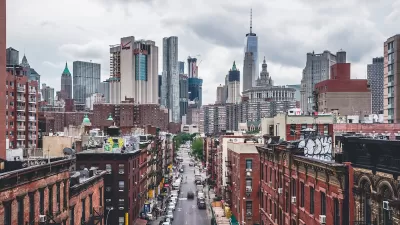The 5,000 local ordinances that prohibit “annoyances” often focus on the fraught intersections of the public and private. And it’s probably no surprise that public employees often seek legal protections from annoying (or annoyed) citizens.
Joe Palazzolo reports on the ongoing (and probably never-ending) debate over the legality of laws that prohibit annoyances. In an article equal parts bemusing and alarming, Palazzolo reports, “[dozens] of cities and states have passed strictures that equate ‘annoying’ with ‘illegal,’ adding to an already existing stock of aging laws that employ the word. According to Municode, an online database of local laws, ‘annoy’ or some variation appears in more than 5,000 ordinances.”
“Many of these pass constitutional muster, because they spell out the things that irritate to the point of illegality, such as unreasonably loud music, honking, shouting, fighting and pets that near-constantly bark or yowl.”
But many such laws have not withheld legal scrutiny. For example, “[the] U.S. Supreme Court ruled in the 1971 case Coates v. Cincinnati that the word ‘annoying’ was too vague to support a criminal charge. The decision struck down an ordinance that made it illegal to assemble on the sidewalk ‘in a manner annoying to passersby.’
According to Palazzolo, there are many more examples of laws that might have a hard time standing up to the analysis of the Supreme Court. For example:
- "A law in Vassar, Mich., makes it unlawful for any person to 'flirt' with or 'willfully annoy' a stranger."
- "Lawrence, Mass., says no person 'shall in any way annoy another person' within city parks."
- "In Winthrop, Mass., it's illegal to 'annoy another person' on any town beach."
- "In Cumberland, Md., it's illegal to annoy city employees."
FULL STORY: In These Towns, Being Annoying Is a Criminal Offense

Alabama: Trump Terminates Settlements for Black Communities Harmed By Raw Sewage
Trump deemed the landmark civil rights agreement “illegal DEI and environmental justice policy.”

Planetizen Federal Action Tracker
A weekly monitor of how Trump’s orders and actions are impacting planners and planning in America.

The 120 Year Old Tiny Home Villages That Sheltered San Francisco’s Earthquake Refugees
More than a century ago, San Francisco mobilized to house thousands of residents displaced by the 1906 earthquake. Could their strategy offer a model for the present?

In Both Crashes and Crime, Public Transportation is Far Safer than Driving
Contrary to popular assumptions, public transportation has far lower crash and crime rates than automobile travel. For safer communities, improve and encourage transit travel.

Report: Zoning Reforms Should Complement Nashville’s Ambitious Transit Plan
Without reform, restrictive zoning codes will limit the impact of the city’s planned transit expansion and could exclude some of the residents who depend on transit the most.

Judge Orders Release of Frozen IRA, IIJA Funding
The decision is a victory for environmental groups who charged that freezing funds for critical infrastructure and disaster response programs caused “real and irreparable harm” to communities.
Urban Design for Planners 1: Software Tools
This six-course series explores essential urban design concepts using open source software and equips planners with the tools they need to participate fully in the urban design process.
Planning for Universal Design
Learn the tools for implementing Universal Design in planning regulations.
Clanton & Associates, Inc.
Jessamine County Fiscal Court
Institute for Housing and Urban Development Studies (IHS)
City of Grandview
Harvard GSD Executive Education
Toledo-Lucas County Plan Commissions
Salt Lake City
NYU Wagner Graduate School of Public Service





























